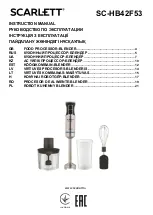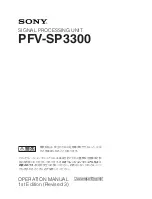
21
“D-Max” Clip Limiter
The main limitation with traditional dynamics control is the inability of the processing to react truly
instantaneously to the signal. One of the most significant advantages of digital signal processing over
analogue is the ability to delay the audio signal precisely and without extensive complex hardware. The entire
domain of digital signal processing is based around the combination of delaying, multiplying, and
accumulating numbers (representing samples of audio) to implement all the filters and dynamics processing
we have come to expect today.
In the case of dynamics processing, being able to delay a signal allows the processor module to delay the
main signal in relation to the sidechain (the signal being monitored relative to the threshold), so that it can
compensate for peaks prior to the arrival of the main signal.
Consider the situation of a monitor engineer listening to a band perform. Having no access to dynamics
processors, he has had to resort to manually 'riding the faders' in an attempt to keep control of the levels.
Should the level of one of the channels on his desk reach an unacceptably high level, he will turn it down
appropriately.
In this case, the delay between the signal actually going over the threshold, the engineer registering the
situation, and then turning the signal down will be in the order of several hundred milliseconds at best. This
will only be true if he is not distracted – in reality, it may be several seconds before any gain reduction is
imposed on the signal to bring it under control.
For an analogue dynamics processor, the situation is
much better. Controlling the gain electronically, and not
relying on a human sidechain feedback mechanism, it
can react much more quickly.
The red waveform represents the input to the
dynamics module, with the dotted line showing the
threshold for gain control to occur. There are several
peaks towards the start of this signal that are above the
threshold, and so the dynamics processing should react
to these as appropriate. (In this case reduce the gain).
The blue waveform shows the output of the
dynamics module. The circled peak demonstrates that
the processor has missed the first peak above the
threshold (as it is very fast and short), but has 'caught
up' shortly afterwards, keeping all other peaks under
control. As it is unable to predict what is coming, this
will always be a failing with analogue dynamics
processing.
There is a hidden sidechain in
operation even in this case. The
main signal path is fed through
the monitor desk and the gain
controlled by adjusting the fader.
The sidechain is formed by the
feedback path between the
engineer's ears checking the level
and his brain instructing his hand
to turn the fader down if the
volume goes over the threshold
he has chosen.
Manual de Usuario
DSP-2040
Summary of Contents for DSP-2040
Page 6: ...DSP 2040 User s Manual...








































